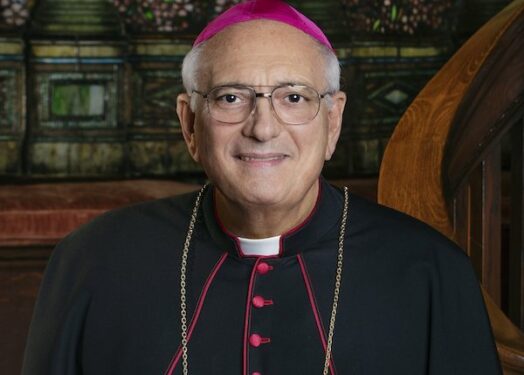Two saints who walked with migrants at the beginning of the last century can teach us today how we can accompany today’s new migrants on their journey to a new life. Both St. Frances Xavier Cabrini and St. Giovanni Battista Scalabrini have been called the Mother or Father of migrants — St. Cabrini when she was canonized and St. Scalabrini when he was beatified. Titles can be deceptive, however; when someone is called mother or father it goes well beyond a simple appellation. Rather, it is a term of endearment and respect.
Both saints read the signs of their times and mobilized to assist their Italian co-nationals at the great migration of Italians, approximately from 1890 to 1920. Both established religious orders to deal with this pastoral phenomenon, which entailed meeting the social and educational needs of these immigrants. St. Cabrini and St. Scalabrini collaborated and encouraged one another in their efforts to meet the needs of Italian migrants coming to a country that needed their labor but did not necessarily welcome them. As Church people, they confronted even the misunderstanding of Church leaders, who sometimes bowed to the pressures of not welcoming the newcomers.
But what can we learn from their zeal and their methods? It seems that the migration phenomenon throughout the centuries has not changed very much. Migrants are pushed by poverty and political turmoil. Migrants leave their homeland and search for a better life for themselves and their children. Coming over land or by boat entails the same difficulties and dangers. Migrants need to be welcomed and accepted and their needs attended to and met.
These two great saints were motivated by the pastoral care of souls, but they did not neglect the bodily and social needs of the migrants. Although St. Scalabrini visited the United States and South America to see the situation for himself, it was St. Cabrini who came to the United States and traveled, even more widely, to directly assist the migrants. St. Scalabrini was ahead of his time; he recognized this sociological phenomenon before sociology was even much of a science. In the constitutions of his order, he directed that centers for the study of migration be established to analyze the migratory phenomenon, so that proper pastoral and social care could be given to migrants. The Center for Migration Studies of New York is one example.
St. Cabrini, however, was more of an activist. She sought to meet every pastoral and social need, whether it be through direct assistance, schools, hospitals, or orphanages. She established a myriad of institutions in the U.S. and Latin America, which attest to her organizational genius. She attracted women to her order, which she established by her own initiative.
These two pioneers of migration support did not wait for someone to tell them what to do. They saw the situation before them and then went into action, inspired by their faith.
The story of more than a century ago is similar to what we are experiencing today, when we compare negative public opinion towards immigration and a lack of resources to accompany the migrants. It is encouraging to see how the institutional Church has responded to the phenomenon of migration.
The U.S. Conference of Catholic Bishops has two offices dedicated to migrant assistance and integration — the Department of Migration and Refugee Services (MRS) and the Committee on Cultural Diversity in the Church. Other Catholic agencies, such as the Catholic Legal Immigration Network, Inc. (CLINIC), which assists with the legal needs of migrants, and diocesan Catholic Charities organizations, which sponsor immigration and refugee resettlement programs, are also part of the Church’s support to migrants.
Today, there are not only bishops who have risen to the challenge, as well as priests and consecrated religious, but also many laypeople who understand the teachings of our Lord that we must assist the newcomer. They may never be canonized, but their work is recognized by the Church, and, I am sure, the Lord Himself. Mother Cabrini and Father Scalabrini are shining examples to all Catholics and others of good will that we are called to “welcome the stranger.” (Mt. 25:35)

